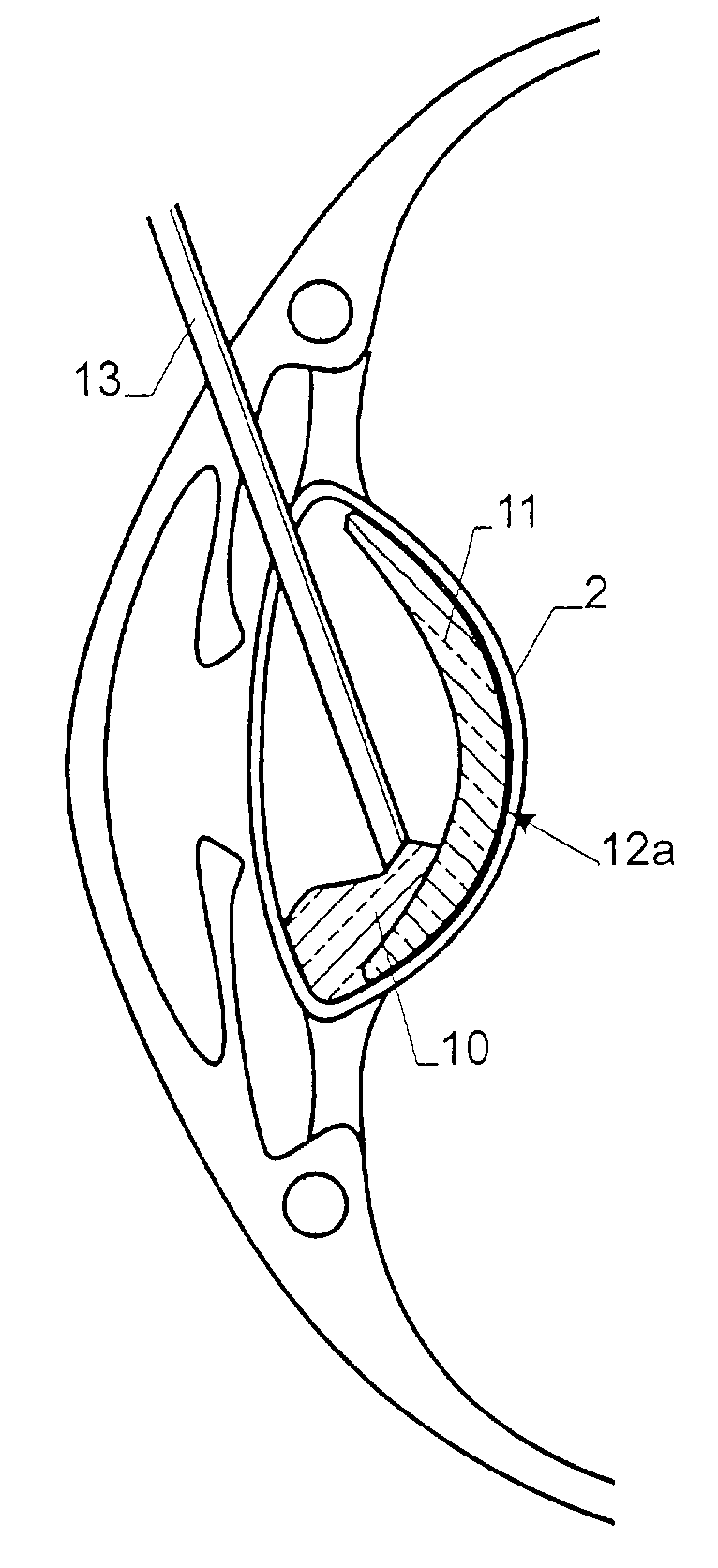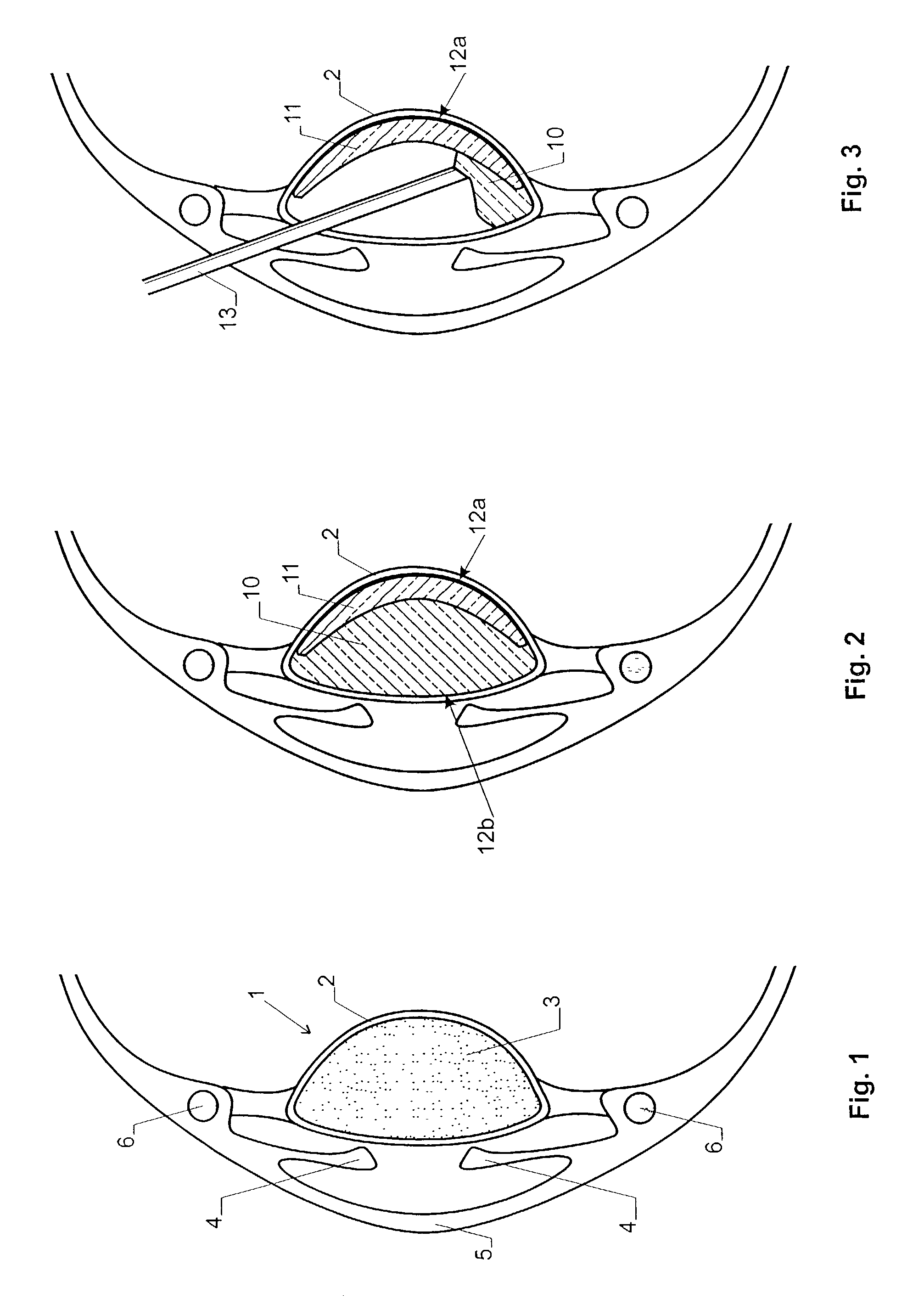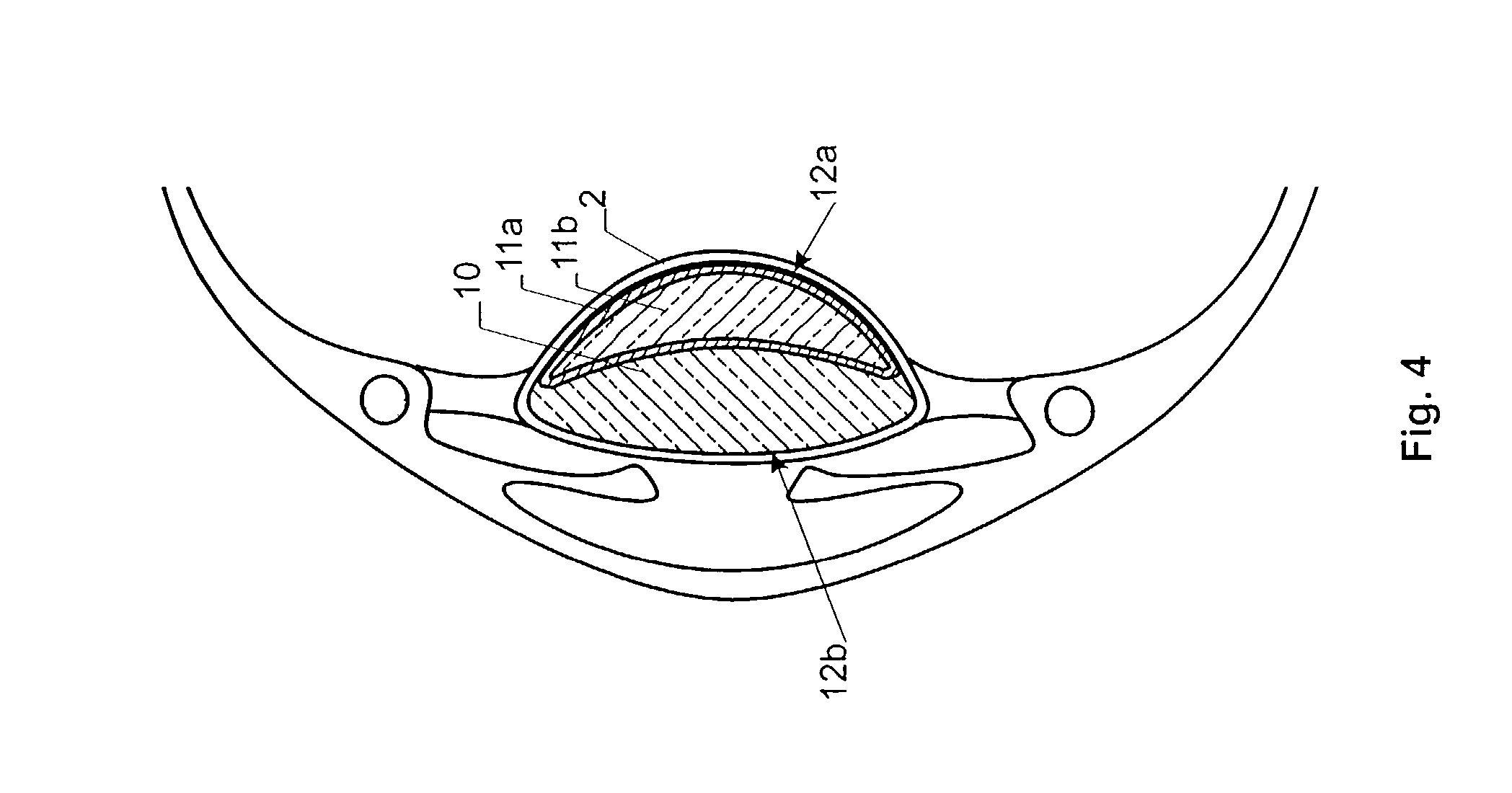Lens implant
a technology of lens and ocular housing mechanism, which is applied in the field of lenses, can solve the problems of large expenditure, mechanical properties of the lens, and difficulty in connecting the lens to the ocular accommodation mechanism
- Summary
- Abstract
- Description
- Claims
- Application Information
AI Technical Summary
Benefits of technology
Problems solved by technology
Method used
Image
Examples
Embodiment Construction
[0025]The parts of the eye that are the most important ones in the present context are illustrated in FIG. 1 and include a lens 1, consisting of a lens capsule 2 and a lens body 3, an iris 4 and a cornea 5.
[0026]The lens 1 is an elastic body of which the curvature changes upon a contraction of Müller's muscle 6, so that an accommodation of the eye to various focal distances becomes possible. With increasing age, however, the lens body 3 becomes harder, which leads to a partial or complete loss of the accommodation property.
[0027]The present invention relates to a lens implant which replaces the lens body 3 of the eye. Such a lens is illustrated in FIG. 2. It consists of two transparent parts 10, 11 which abut against each other and which together have about the same size and shape as the replaced lens body 3 accommodated to infinity. Thus a distal or convex surface 12a of the lens implant is curved stronger than a proximal surface 12b as is the case at the lens body. The term proxim...
PUM
 Login to View More
Login to View More Abstract
Description
Claims
Application Information
 Login to View More
Login to View More - R&D
- Intellectual Property
- Life Sciences
- Materials
- Tech Scout
- Unparalleled Data Quality
- Higher Quality Content
- 60% Fewer Hallucinations
Browse by: Latest US Patents, China's latest patents, Technical Efficacy Thesaurus, Application Domain, Technology Topic, Popular Technical Reports.
© 2025 PatSnap. All rights reserved.Legal|Privacy policy|Modern Slavery Act Transparency Statement|Sitemap|About US| Contact US: help@patsnap.com



